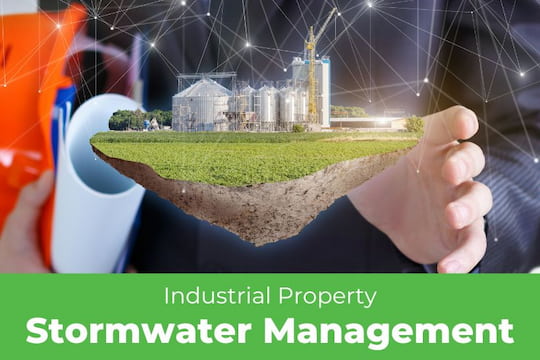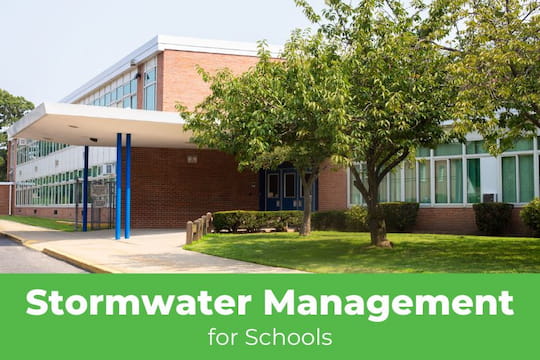Professionals in the stormwater industry strive to uphold best practices that efficiently manage stormwater and safeguard the environment. Effective stormwater maintenance is pivotal in stormwater management goals such as minimizing flooding, mitigating pollution, and preserving water body health.
It is essential to understand the potential ramifications of overlooking these measures. Embracing the following crucial best practices can help optimize stormwater system maintenance to prevent failures and secure long-term sustainability.
What are Best Practices?

Best practices refer to the most effective, proven, time-tested methods, techniques, and strategies for managing stormwater systems. Implementing best practices means using the best ways to prevent issues that damage a stormwater system, degrade water quality and harm the environment. Companies use best practices to guide their work routines and ensure long-term, sustainable health for the entire ecosystem.
Remove Debris Regularly
Removing built-up debris such as leaves, sediment, and garbage from stormwater catch basins is one of the most vital stormwater management best practices in a maintenance routine. Depending on a system's size and location, it can have several or even hundreds of catch basins designed to capture stormwater runoff. Catch basins are part of the inlet or entry point of the stormwater system, and keeping them clean and clear optimizes system performance and prevents blockages that can lead to localized flooding.
If catch basins are not cleaned regularly, debris can obstruct water flow and create standing pools, potential damage to infrastructure and compromised water quality. Some cities have established a volunteer "Adopt-a-Drain" program to supplement routine maintenance and educate the community about water quality awareness. Residents volunteer to keep drains clear by regularly removing vegetation, trash and other pollutants from storm drains and catch basins.
While some property owners might consider handling catch basin cleaning themselves, it is important to recognize the potential risks and oversights that can occur. Instead, hiring a professional for this essential work ensures a higher level of safety, efficiency, and comprehensive inspection.
Stormwater catch basins play a pivotal role in managing runoff, designed to capture debris, sediment, and pollutants before they enter the drainage system. Regular cleaning of these catch basins is paramount to the overall stormwater management routine. However, this task can be complex and requires specialized knowledge and equipment to be carried out effectively.
Professional stormwater maintenance teams have the expertise to inspect catch basins thoroughly. They can identify various issues that might be overlooked by property owners, such as the need for jetting if sediment has accumulated in the lines, cracked grout work, loose framesets, chains, or the need for filter replacements. By addressing these concerns promptly, they can prevent potential damage to the infrastructure and ensure the system functions optimally.
Moreover, stormwater systems can have numerous catch basins spread across vast areas. It is a meticulous task to manage them all efficiently, which is why professionals are better equipped to handle the scale and complexity of stormwater maintenance.
Attempting to clean catch basins without proper knowledge and training can lead to unintended consequences. Dealing with stormwater debris involves potential hazards and risks, and untrained individuals might inadvertently cause blockages or damage to the system, leading to localized flooding or compromised water quality.
In conclusion, while initiatives like "Adopt-a-Drain" programs by some cities encourage community involvement, it is essential to acknowledge that stormwater maintenance should primarily be handled by qualified professionals. Their expertise, specialized equipment, and attention to detail ensure that the stormwater management system operates effectively, safeguarding properties and the environment from potential harm. So, leave this crucial task to the professionals and reap the benefits of a well-maintained stormwater management system.
Inspect Stormwater Outlets Regularly

Good stormwater maintenance best practices include regular inspection of outlets in the system. It is crucial to maintain an open pathway to ensure smooth water flow through the system. Regularly inspecting and cleaning the stormwater system's outlets helps protect aquatic habitats and reduces the risk of erosion and ponding. When outlets do not receive regular inspections, debris can form blockages that cause backed-up stormwater, increased flood risk and other problems.
Regular Sediment Basin Maintenance
Sediment basins provide a valuable function of catching and retaining soil so that it does not block or pollute local waterways. During construction or land development, sediment basins act as essential protection to capture eroded or disturbed soil and keep it on the construction site during a storm.
These structures may be temporary and built to serve a construction site until the completion of the project. However, sediment basins can fill up, and if they do not undergo regular cleaning and maintenance, sediment-laden runoff can pollute local water bodies, harming aquatic life and polluting the water. Sediment basins prevent this and enhance the ecosystem by creating a safe habitat for certain types of birds, providing recreational opportunities for bird watchers and nature enthusiasts.
Managing Vegetation
Vegetation that grows within stormwater systems can promote natural water filtration and stabilize the surrounding soil, which minimizes erosion. Plants also protect and enhance the health of the local ecosystem. However, if vegetation is allowed to grow unchecked, plants, branches, fallen leaves, and other organic matter can block water flow and result in flooding.
The blockages can also hinder the stability and effectiveness of other parts of the stormwater system. Resulting problems include sediment runoff, worsening water quality and negative impacts on downstream habitats. Conversely, managing vegetation effectively can enhance the stormwater system's functionality while providing a safe and healthy ecosystem for birds and insects.
Adding Green Infrastructure
Adding green infrastructure is another strategy on the stormwater maintenance best practices list. This process involves adding features to a property to manage stormwater, such as rain gardens, permeable pavements, and green roofs. Green infrastructure features manage stormwater where it falls, allowing it to soak into the ground.
Permeable pavements, grasses, soil and other green infrastructure surfaces help remove pollutants from the water while it remains onsite. Public gardens, green corridors and vegetated buffers along streams and river banks act as additional eco-friendly green infrastructure to filter water, stabilize banks and provide a habitat for wildlife.
Monitoring Water Quality

Regularly monitoring stormwater for pollutant levels is essential to assessing system performance and identifying potential issues. Analyzing water quality data allows engineers to make informed decisions about optimizing stormwater management systems and strategies.
If the water quality goes unmonitored, pollutants may not get detected and resolved until they have done extensive damage to the environment, aquatic life and water quality. When pollution goes unaddressed, it can threaten recreational water bodies and drinking water supplies, negatively impacting public health.
Developing an Operation and Maintenance Plan
Stormwater maintenance best practices will not likely occur routinely and properly without an established Operation and Maintenance (O&M) plan. This fundamental plan outlines routine tasks, inspection schedules, and proper procedures for maintenance. If the stormwater management plan is unclear, missing components or suffers from poor execution, it can lead to a deteriorating stormwater system. This result can trigger increased maintenance and repair costs, reduced system effectiveness and increased susceptibility to failure. Conversely, a well-planned and executed O&M plan can extend the life of a stormwater system and deliver long-term benefits to community residents and the environment.
Embrace Stormwater Management Best Practices
Stormwater maintenance best practices are vital to safeguarding communities and their natural resources. As responsible stewards of the environment, adopting best practices and staying informed about advancements in stormwater technology can ensure a sustainable future of clean, available water for generations to come.
If you need assistance implementing or carrying out storm water management routines for maintenance and other tasks, our experienced system engineers can help design an effective and economical plan to put your stormwater system maintenance on auto-pilot. Contact the experts at CatchAll Environmental today!













.jpg)


